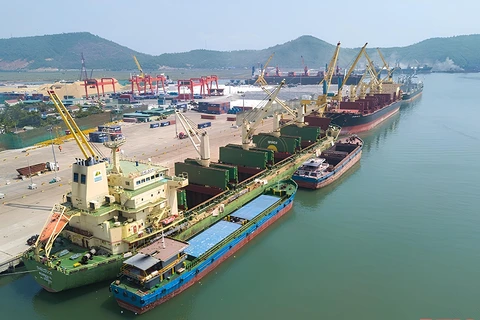 Vinh Lang stele, a national treasure in Lam Kinh special national relic site (Photo: thanhhoa.gov.vn)
Vinh Lang stele, a national treasure in Lam Kinh special national relic site (Photo: thanhhoa.gov.vn) Thanh Hoa (VNA) – The central province of Thanh Hoa has great potential for tourism development thanks to a large number of cultural and historical relic sites, including Lam Kinh, which was recognised as a special national relic site in 2012.
Located in Tho Xuan district, Lam Kinh is the homeland of Later Le Dynasty, the birthplace of National Hero Le Loi and the site marking the start of Lam Son Uprising to fight Ming invaders in the early 15th century.
After Le Loi (King Le Thai To) came to the throne and moved the capital to Dong Kinh (or Thang Long), he had the second biggest citadel built in his native land, Lam Son. The citadel is known as Lam Kinh, or Tay Kinh Citadel.
He named the country Dai Viet and began the most prosperous and peaceful dynasty in Vietnam's feudal history - the Later Le Dynasty that lasted 360 years (1428-1789). It is also the "eternal resting" place of King Le Thai To and other kings and queens of the Later Le Dynasty, a symbol of national pride in the historical period in the building of the Dai Viet state.
The 200-hectare site is a complex of monuments with a large area of unique architectural works of the Later Le Dynasty.
From 2021 to September 2023, Lam Kinh welcomed more than 652,500 visitors, including 1,300 foreigners.
In order to lure visitors to Lam Kinh, experts said that it is necessary to focus on developing tourism plans for the site following the World Heritage Convention and relevant laws, including smart technologies to prevent site degradation.
According to Associate Prof. Dr. Pham Mai Hung, in order to optimise the values of the Lam Kinh special national relic site, it is crucial to design a series of comprehensive measures to preserve the site and better promote its values at the same time.
He said he hopes the site will be turned into a centre for historical research and education, giving visitors an insight into the famed Lam Son Uprising./.
























